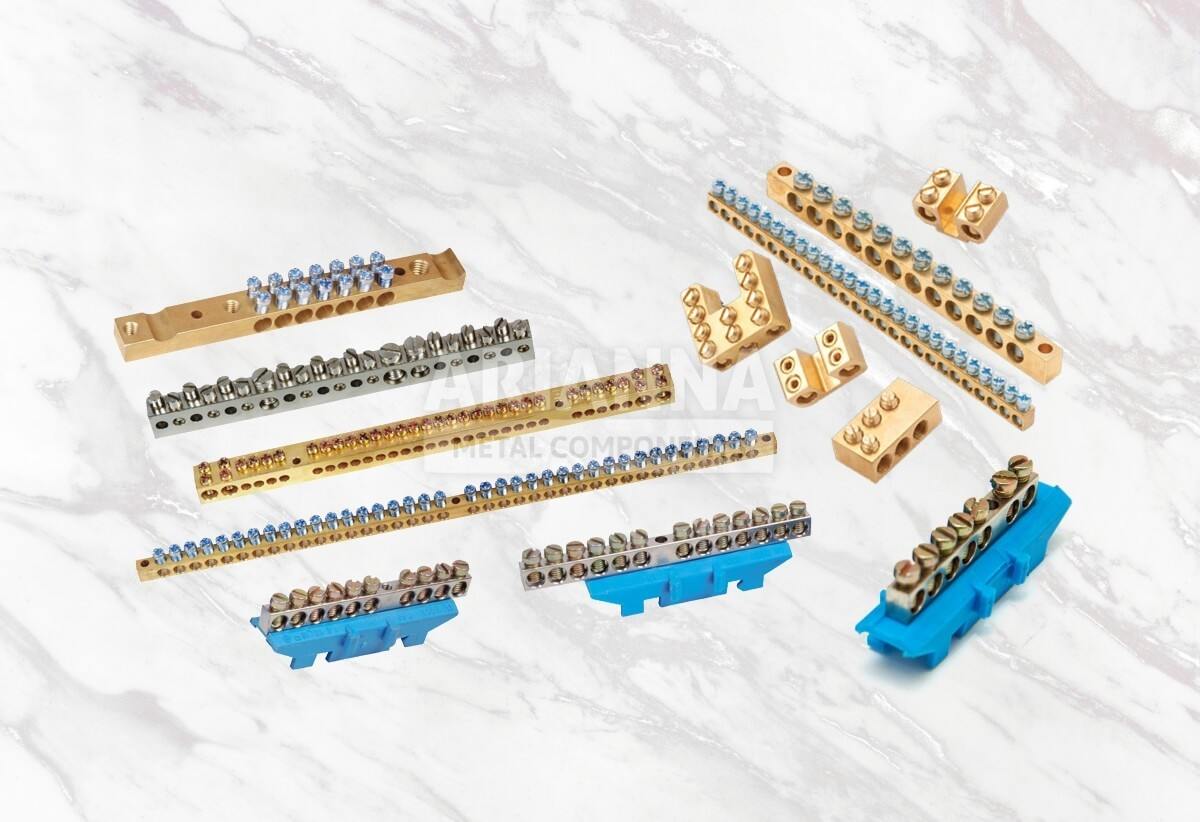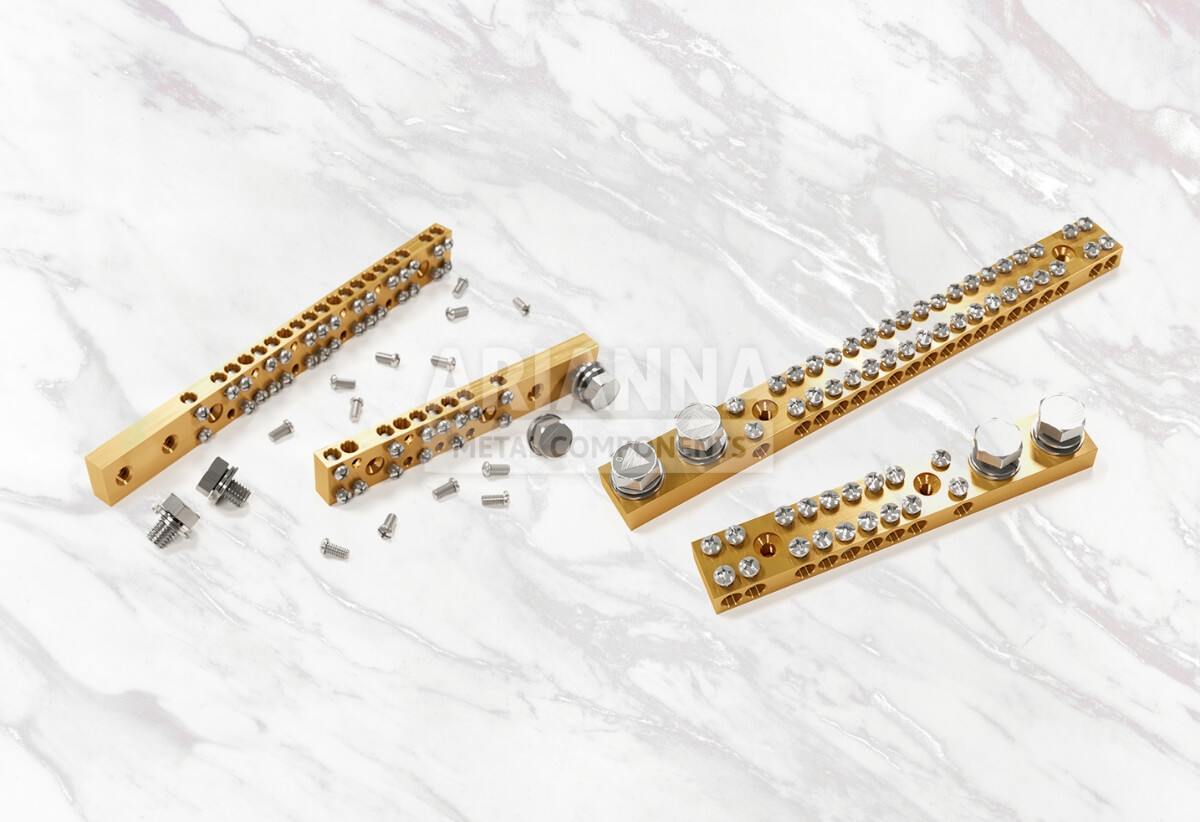The Top Things to consider while Selecting Terminal Bars for Industrial Application!

Terminal Bars are a type of electrical connector that is used to transfer electricity from a power or grounding source to a device. They are designed to make a solid and convenient connection point from one source to many branch circuits or many branch circuits back to an only source. Terminal Bars feature a pre-drilled hole and come with various screw connection options.
Are you looking for Terminal Bars? There are many types of terminal bars that are used in a variety of electrical applications. For optimal performance, you must use the right type of terminal bars. A wrong choice may either alter the functionality of the electric application or even create any risk eventually. Learn about some basic types of terminal bars and find out how to choose the right type of terminal bars.
Different Types of Terminal Bars in Electrical Application
We’re going to explore the several types of terminal bars and how they may be applicable to your application.
- Blade Terminal Bars: It is the terminal bar that comes with a simple blade type structure and is available in both male and female types. Blade Terminal Bars are commonly used in small electric devices.
- Screw Clamp Terminal Bars: Screw Clamp Terminal Bars work on the principle that the screw or clamp system presses the conductor against any material conductor strip, resulting in extremely high contact pressure.
- Spade Terminal Bars: Spade Terminal Bars are compact in size, light in weight and the main body is cover by insulating material. It provides highly secure and easy installation & removal.
- Insulated Terminal Bars: Insulated Terminal Bars are used to provide high-level protection from any electric accident. Insulated Terminal Bars are classified based on power rating capacity and colour code.
- Spring Clamp Terminal Bars: Spring Clamp Terminal Bars are commonly used in high-vibration installations. It provides maintenance-free performance and easy wiring.
- Explosion Proof Terminal Bars: Explosion Proof Terminal Bars are used in extremely sensitive environments or in harsh and hazardous environments.
- Stud Terminal Bars: There are mainly two types of stud terminal bars such as screwdriver-operated stud terminal bars and nut driver-operated stud terminal bars. This type of terminal bar is widely used in the electric, electronic & telecommunications industries.
Things You Need to Consider When Sourcing Terminal Bars
After looking at the most popular and common types of terminal bars, it has become easy to decide which kind of terminal bars are applicable for your industry. However, there are other factors to consider when selecting the right type of terminal bars, such as material, dimension, finishing, screw combination, number of connections, and the right manufacturer.
- Material: Terminal Bars are available in varied materials. Copper Terminal Bars offer a superior level of impact resistance and high strength. In comparison, aluminium terminal bars are better protected against corrosion and provide high electric conductivity. The range of terminal bars are also available in other materials such as brass, zinc, titanium, and bronze.
- Dimension: The dimension and size of the terminal bars are the main things to consider before requesting a quote from any manufacturers. It is critical to check the length and even the thickness so that they can be effectively installed and perform an operation on various electrical applications while remaining intact. M2 is the standard and initial dimension of terminal bars. The expertise manufacturer can provide custom terminal bars in any size and dimensions with accurate & efficient production.
- Finishing or Coating: When selecting a terminal bar, the type of finishing or coating is also important. The thin finishing layer protects the terminal bar from the stinging and corrosive effects of oxidation. You should choose a plated terminal bar that enhances protection against climatic variability and atmospheric conditions without significantly reducing its efficiency and electrical conductivity. If you have a special preference or requirement, many manufacturers offer custom finishing services.
- Screws Combination: The screw is the required component for wiring with terminal bars, many manufacturers allow the selection of several types of screws for terminal bars. For a secure, efficient, easy, and loose-proof connection, it needs to choose the perfect applicable screw combination with terminal bars. There are several types of screws available with a variety of heads (slotted, Phillips, hex), material (steel, brass, copper), plating (tin, tinned copper, natural brass), size, etc.
- Number Of Connections: Of course, the another most crucial factor is the number of connections in the terminal bars. The terminal bars must have the proper wiring for any electrical application in which they are to be installed. Choose Terminal bars based on the required connection option for wiring, there are many options available like 2-hole connection terminal bars, 5-hole connection terminal bars, 10-hole connection terminal bars, and many more. If terminal bars do have not an efficient connection option, they may not fit your desired application.
- The Right Manufacturer: It is extremely easy to choose the right terminal bar from a manufacturer with extensive knowledge, experience, and application skills to help you. Selecting the right manufacturer is important as selecting the right terminal bars. Make sure that your manufacturer of Terminal Bars is experienced, has a reputation for quality, and is responsive to your specific needs.
Wrap Up
The best way to determine the preferred terminal bars is to have a clear thought about your requirements. A little bit of flexibility can help you to down the cost as well. So, if you are looking for terminal bars, read this guide which will definitely help you out.
Get in touch with us to know more about Terminal bars.



















